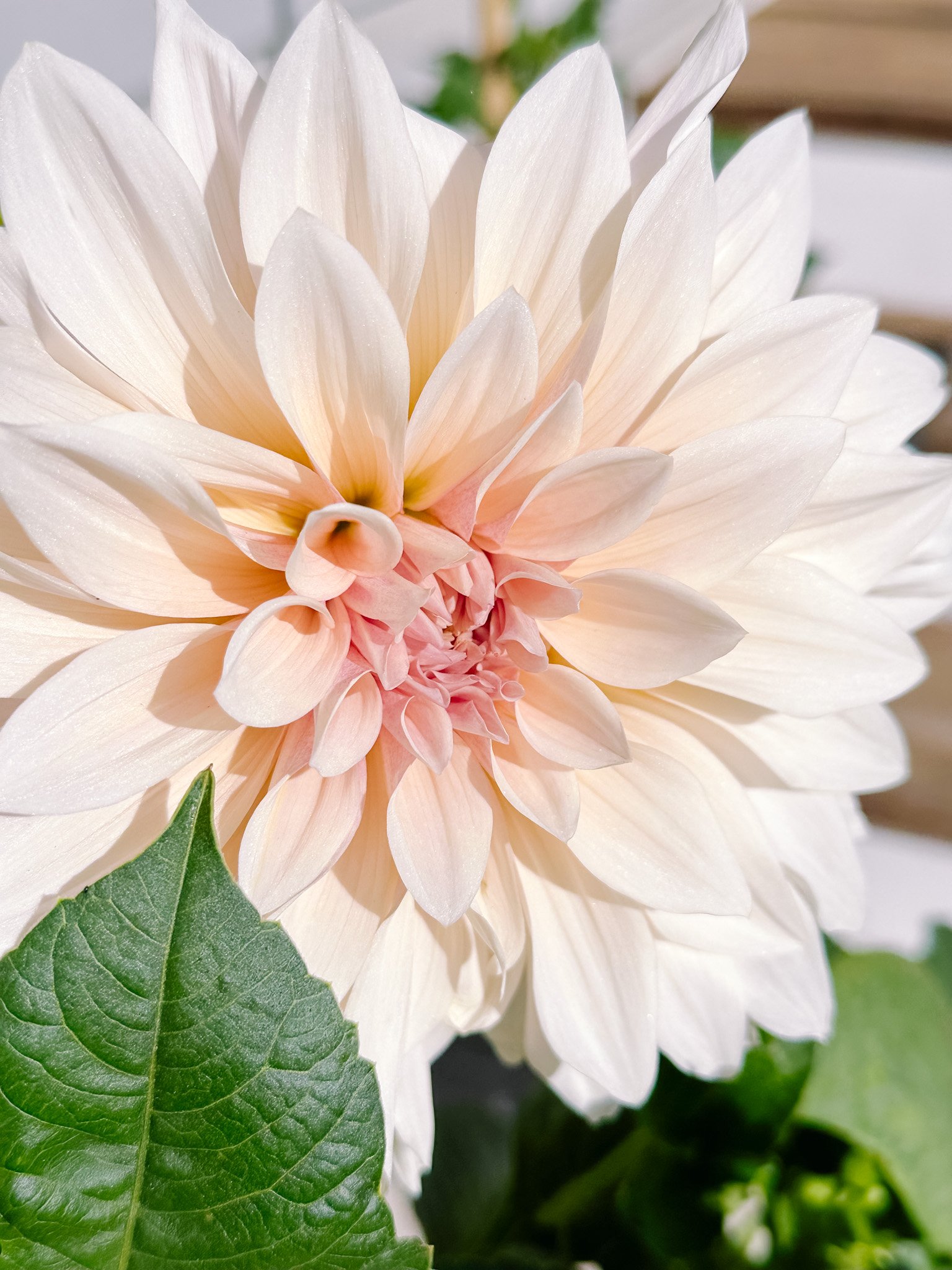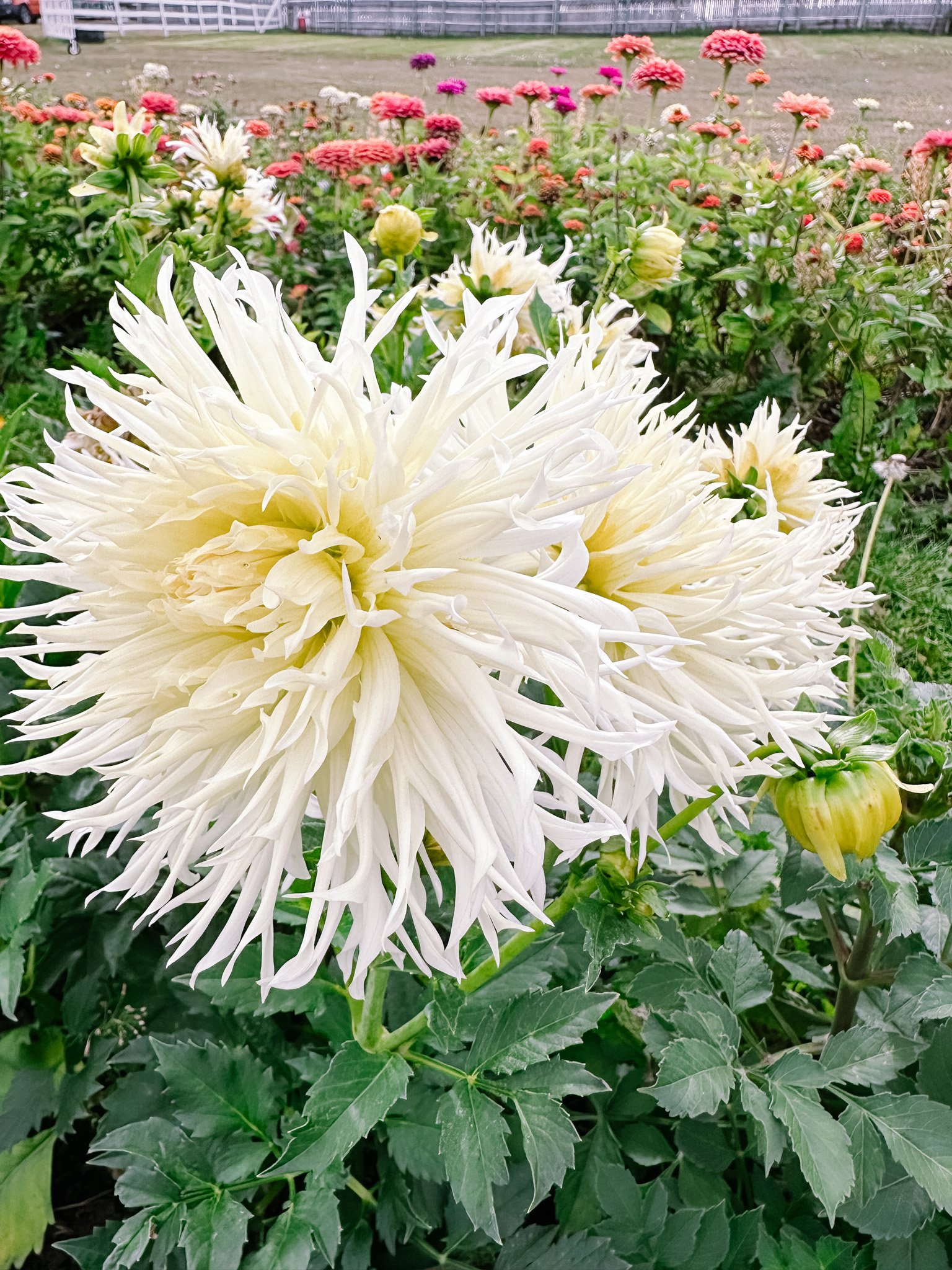
Welcome to my journal
HERE’S WHERE I’LL SHARE NEWS, STORIES AND ALL THE GOOD THINGS HAPPENING AT THE FARM!
What to Know Before Growing Dahlias
Amongst cut flower growers, there is one flower that seems to stand out above all others… the marvelous dahlia. I must say they’re high up on my list of flowers to grow every year, simply because there aren’t any other flowers that quite compare to these beauties. I think one of the most stunning of all is the café au lait. These large and impressive blooms are of a creamy light color with hints of faded pink, and although there are so many varieties of dahlias to love, the café au lait has truly captured my heart! Once you’ve grown dahlias, you’ll understand why it’s so easy to fall completely in love with them.
Café au lait dahlias
If you’re thinking of growing dahlias for personal enjoyment or for profit, there are a few helpful tips here to guide you through the process of getting started.
Café au lait Petra’s Wedding Purple Fox Tsuki Yori
Although it’s fairly easy to grow dahlias (resources can be found online on how to grow them in your specific area, I’ll share more on our cold climate in the next weeks), they can be a source of anxiety for many flower farmers, especially in northern zones where the growing season is short and dahlias are considered as annuals. The main reason is that a single tuber, which produces one plant may cost anywhere from $9 to $35 CAD — depending on the rarity of the variety. It goes without saying that growing large quantities of these plants can quickly become expensive, if they’re not churning out enough blooms to cover costs. In cold climates, starting them indoors for earlier blooms, as well as saving their tubers are ways to cover costs and eventually come into profit. The roots must be dug up every fall before a hard frost — as they are extremely sensitive to cold weather — in order to save the plant’s tubers which can be planted the following spring. The tubers are essentially the roots of the plant and look a lot like elongated potatoes. Year after year, tubers will multiply and can be divided to create more plants. Even though the process of digging up tubers is a lot of work on its own, the most difficult part is storing them throughout the winter and ensuring they don’t dry out, rot or begin to sprout too early in the season. All of these factors highly depend once more on the specific climate they’re grown in. For instance, here in Southern Alberta, although we have cold winters, the air is dry, and one of my greatest concerns is that the lack of humidity could lead to dried out tubers.
Tubers come in different shapes and sizes. Some breeders provide the whole clump, whereas others divide the clumps into single tubers prior to shipping.
It’s also possible to grow dahlias from seed, which is very easy to do and far from being as costly, a pack of 25 seeds can be purchased for as little as $4 CAD. However, there is a catch. In order to grow dahlias that look exactly like the mother plant, a clone in other words, it must be grown from a tuber. Seeds will produce beautiful dahlias, but every single flower will be unique, of a different color, size and shape with little resemblance to the parent plant. Most of the ones I’ve grown from seed were single open center types, as shown in the first photo below. It does happen to find collarettes, orchettes, balls, and an occasional decorative dahlia such as the large, spontaneous looking red bloom found in my seed patch in 2023 (third photo below).
Growing dahlias from seed can be an exciting addition to any garden, especially if the focus isn’t on growing a specific cultivar. You’ll have a fun surprise every time a new plant blooms, and bees absolutely love their open centers full of pollen! Also, if one of your new flower babies truly catches your eye, it’s possible to grow the same plant again the following year by saving its tubers at the end of the growing season.
Above all, I hope you find a wonderful local seed or tuber producer… with a little research, you’ll see there are so many small farms out there offering the most exquisite blooms!










